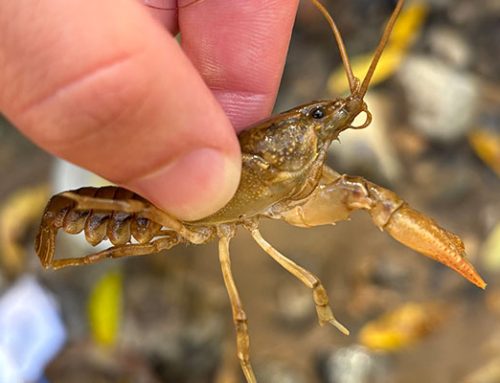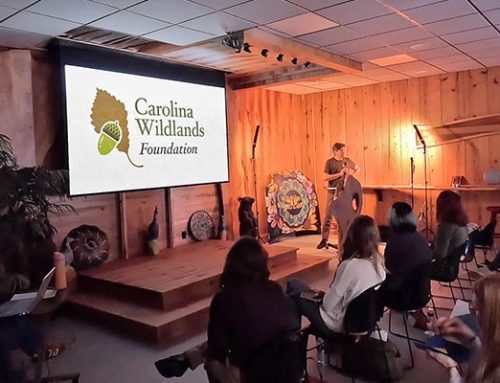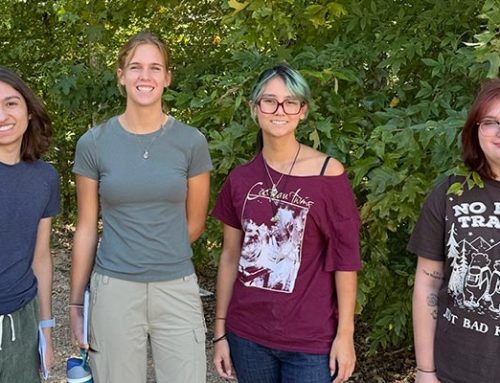Thompson Creek Bootcamp
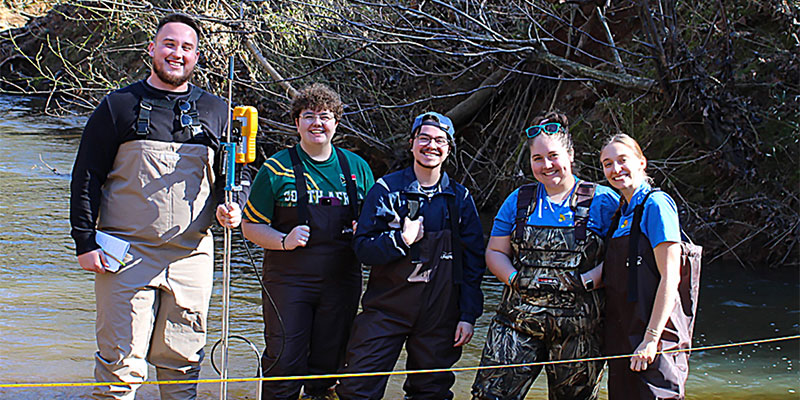
For the past three weeks our interns have experienced quite a whirlwind. Three whole weeks full of the wonders of a Thompson Creek. Then again, I may be biased considering Thompson Creek is my main focus here at Carolina Wildlands. During the course of their internship, the interns have been learning and developing vital skills to use when out in the field. It just so happened that for three weeks straight these skills all revolved around water.
Week One included some guests from Winthrop University. Dr. Sal Blair and his team came out on Friday February 21st. They brought along with them equipment to demonstrate a fish study of Thompson Creek. This equipment includes a seine net, an electroshocking backpack, a measuring tape, and a kick net. We conduct these fish surveys to get an idea of the biodiversity of fish within the creek. So far, we have completed these surveys during Spring, Summer, and Winter. We are only missing Autumn now. The level of the creek was higher than usual due to recent heavy rain, so instead of getting in and participating with the survey, our interns stood on the bank to observe the master at his work. Dr. Blair explained and demonstrated each step of the sampling techniques to the interns and answered all their questions in depth. The creek was carrying too much sediment from erosion for the electroshocking to work efficiently. The seine net was their best option with the creek conditions given. The interns enjoyed getting to observe the fish survey and ask Dr. Blair questions that came up as their curiosity was piqued.
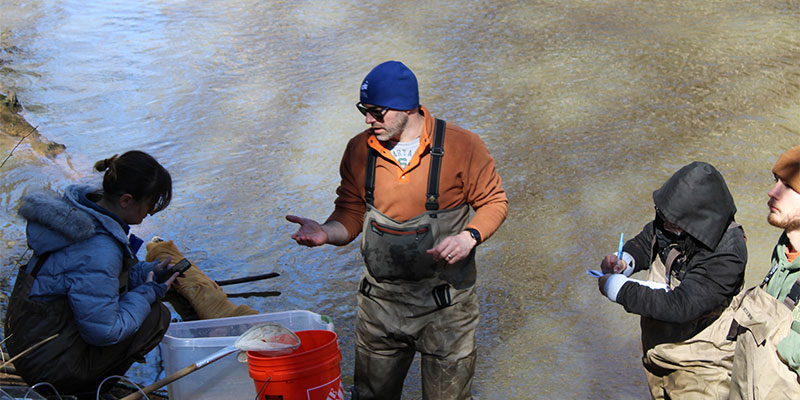
Week Two included water quality sampling and mussel surveys. Water quality is important to us here at Carolina Wildlands and Thompson Creek is our number one priority for improving water quality. The equipment we use to monitor stream health is a HACH Turbidity Meter, YSI ProQuatro Meter, and a FlowTracker. Right when the interns arrived that day, we demonstrated how to calibrate each meter. It is important to calibrate before each sampling event to ensure precision and accuracy of the data. After calibrating it was time to head to the creek. Each piece of equipment was explained in its entirety and indicated proper use. The interns took turns recording data with the YSI Meter in the stream. This meter records temperature, dissolved oxygen, conductivity, total suspended solids, and the pH. Next was the turbidity meter. Our intern Jamison volunteered to venture out into the creek to obtain a sample in the glass vial. He made it back to the bank safely, cleaned off the vial and placed it into the meter for a reading. The last piece of equipment used was the FlowTracker. This is a long metal pole with a sensor on the bottom and a handheld meter attacked to the top. Almost looking identical to land surveying equipment. Our staff showed the interns how to set it up and specified that you must start from the left side of the bank, measure every two feet, and end on the right side of the bank to get an accurate reading of the creek’s flow rate. The interns took turns operating the FlowTracker and learning what it takes to perform and understand water quality sampling. After that lesson was over it was time to bring out the bathyscopes. These are big orange magnifying glasses that look more like traffic cones. They are used to looking at the floor of a creek or pond and to identify living organisms down there. They are mainly used during mussel surveys. Mussels are filter feeders and like to big down into the bottom of creeks. When surveying for mussels the best advice given is to look for a really cool rock. Walking upstream and moving side to side with your bathyscope you are constantly thinking you found something when really you reach down to pick it up and it is just a rock. This was a fun exercise for the interns to do and learn. I mean how often do you get to survey a creek for mussels?
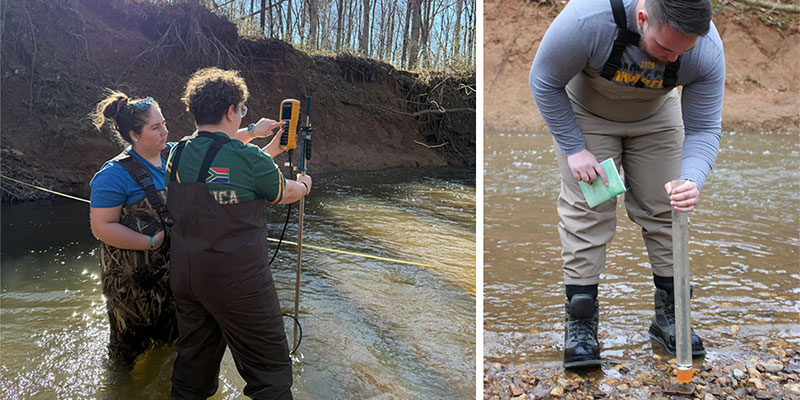
After that lesson was over, it was time to bring out the bathyscopes. These are big orange magnifying glasses that look more like traffic cones. They are used to look at the floor of a creek or pond and to identify living organisms present on the bottom of the creek. They are mainly used during mussel surveys. Mussels are filter feeders and like to dig down into the bottom of creeks. When surveying for mussels the best advice given is to look for a really cool rock.
Walking upstream and moving side to side with your bathyscope you are constantly thinking you found something when you really reach down to pick it up and it is just a rock. This was a fun exercise for the interns to do and learn. I mean how often do you get to survey a creek for mussels?
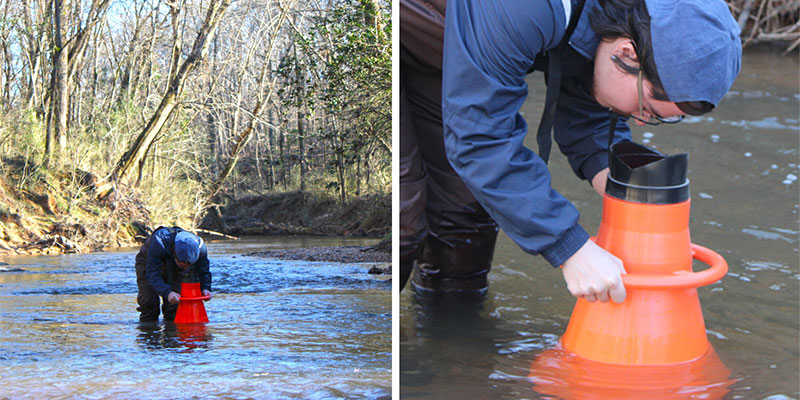
Week Three included benthic macroinvertebrate sampling. Macroinvertebrates are small animals that lack a backbone. They can be aquatic or terrestrial. Benthic means that they are living in the stream bed. Benthic macroinvertebrates are important indicators of water quality, as they may be pollution intolerant, pollution tolerant, or somewhere in between. Many are the larval stages of flying insects such as dragonflies. Some are large enough to see without a microscope but for the most part a microscope is needed to identify the species. When sampling for macroinvertebrates seine nets and dip nets is used. The seine net takes at least three people. One on each side holding the net downstream and one person standing upstream. The person upstream has a job of kicking and stirring up the bottom of the creek hoping to wake any macroinvertebrates up. After a few seconds of kicking, you then bring the seine net into the back and observe what was caught. The dip nets are used along the banks in a shoveling motion to collect anything living on the water’s edge or within the brush of the bank. After the demonstration the interns were eager to have a crack at it. They all grab their dip nets and took them to the water. By just using the dip nets the interns collected around 30 macroinvertebrates. They then took their chances with the seine net and collected probably 20 more macros. That is a total of 50 macroinvertebrates. The best part was admiring the ones collected in Petri dish and bringing them back to the learning center for identification.
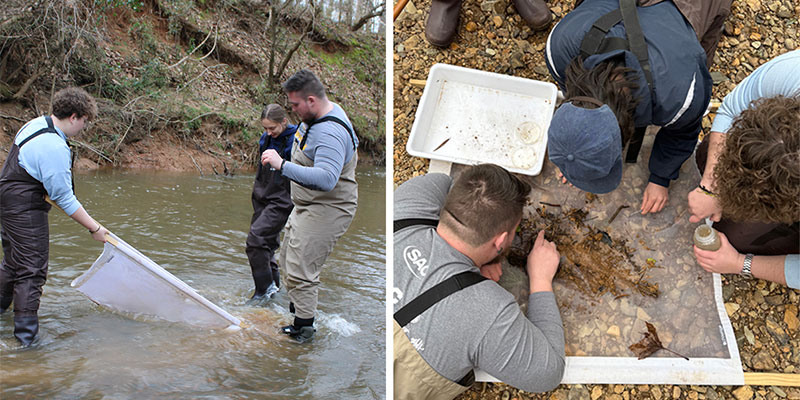
There you have it, a three weeklong bootcamp of Thompson Creek. We hope you enjoy it and sign up for our next bootcamp next semester!
Author: Anna Privette, Environmental Researcher

